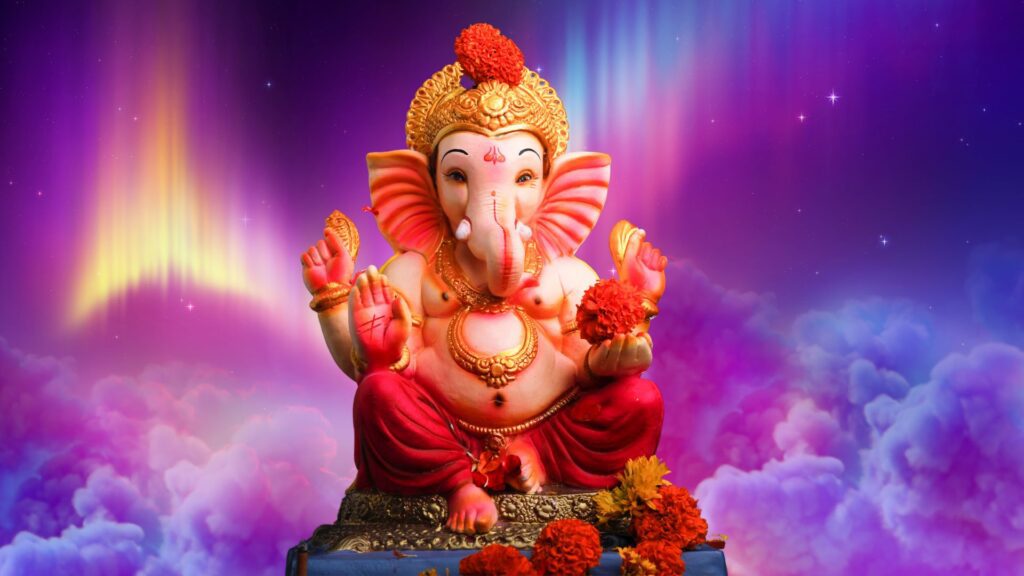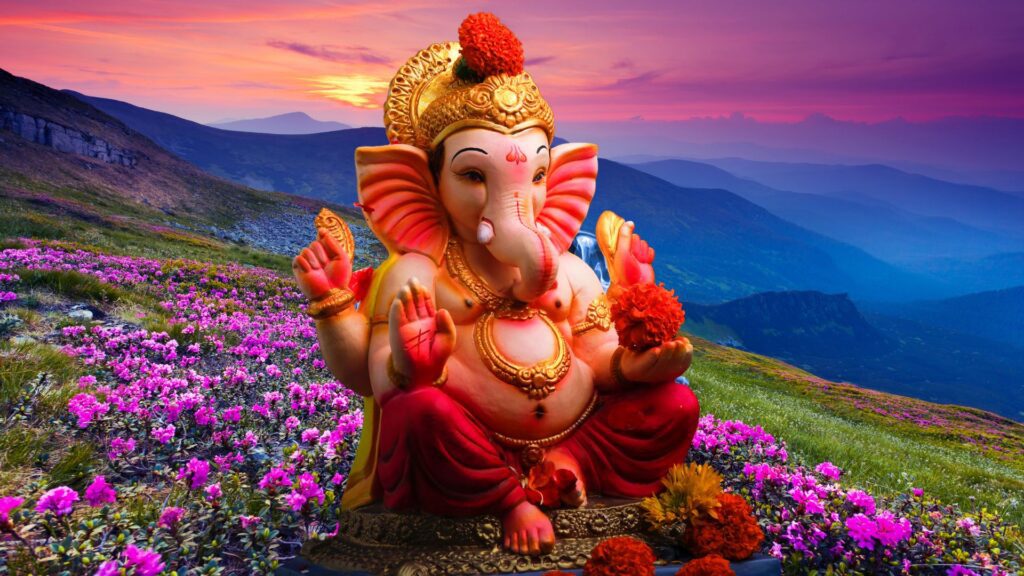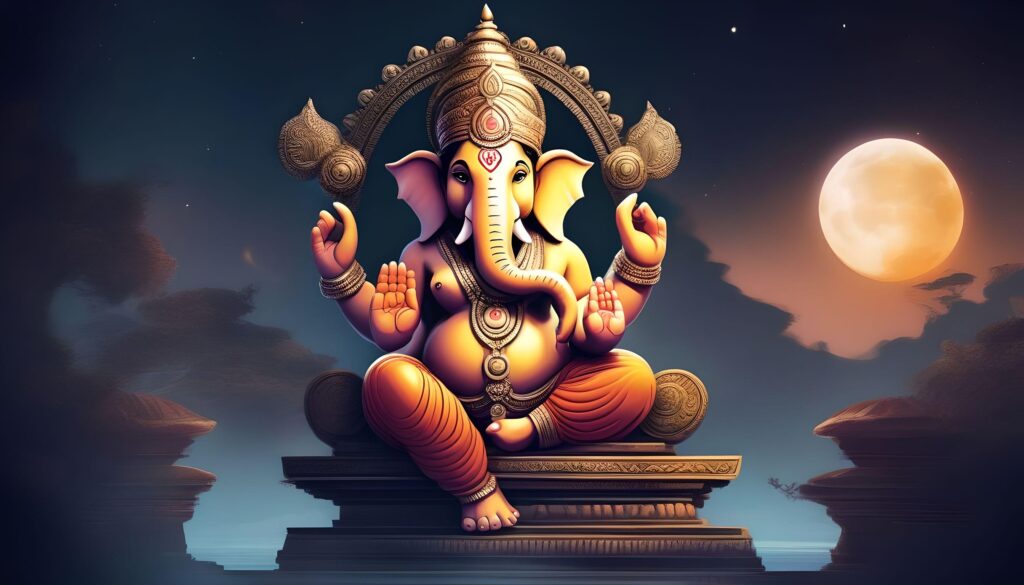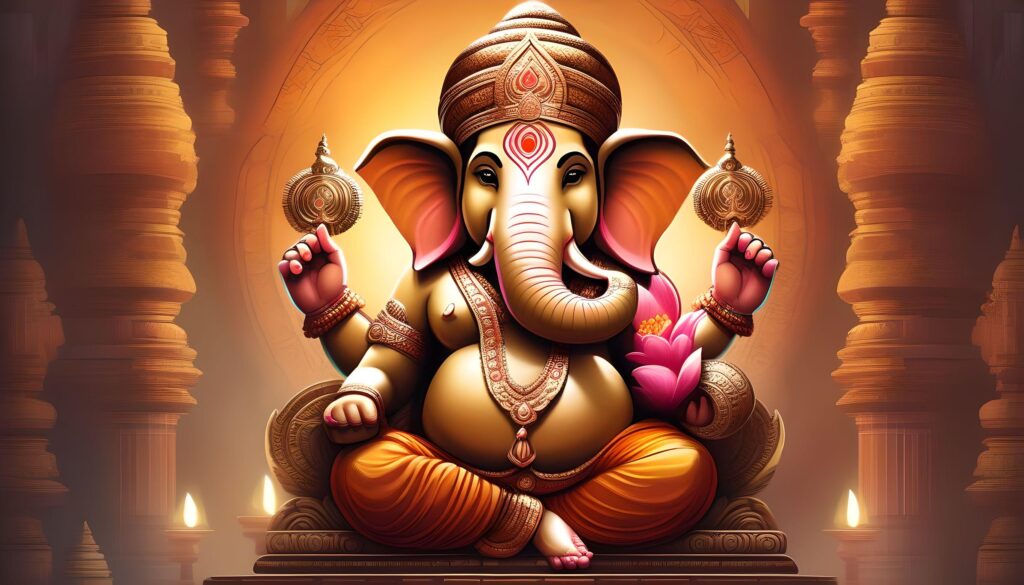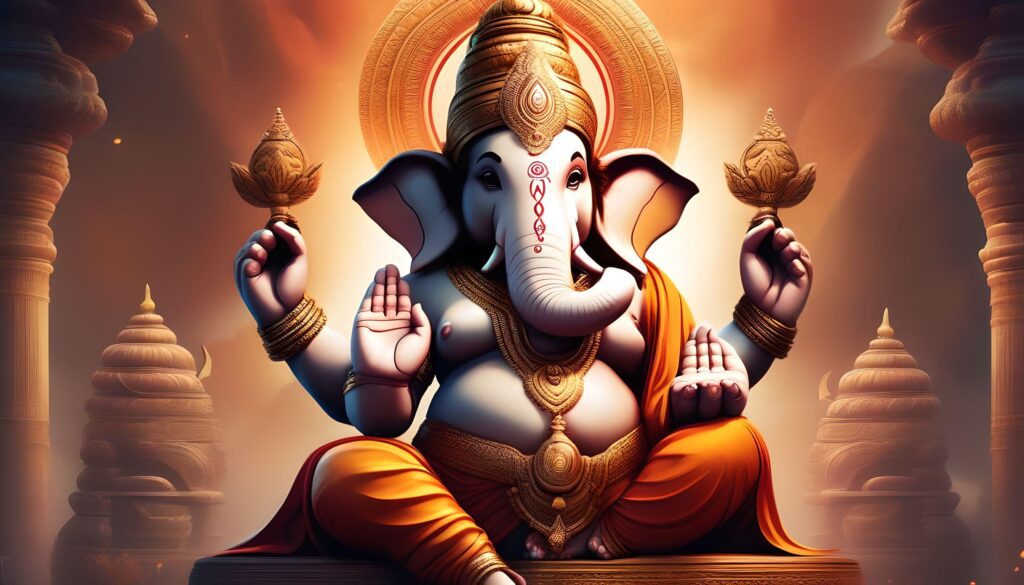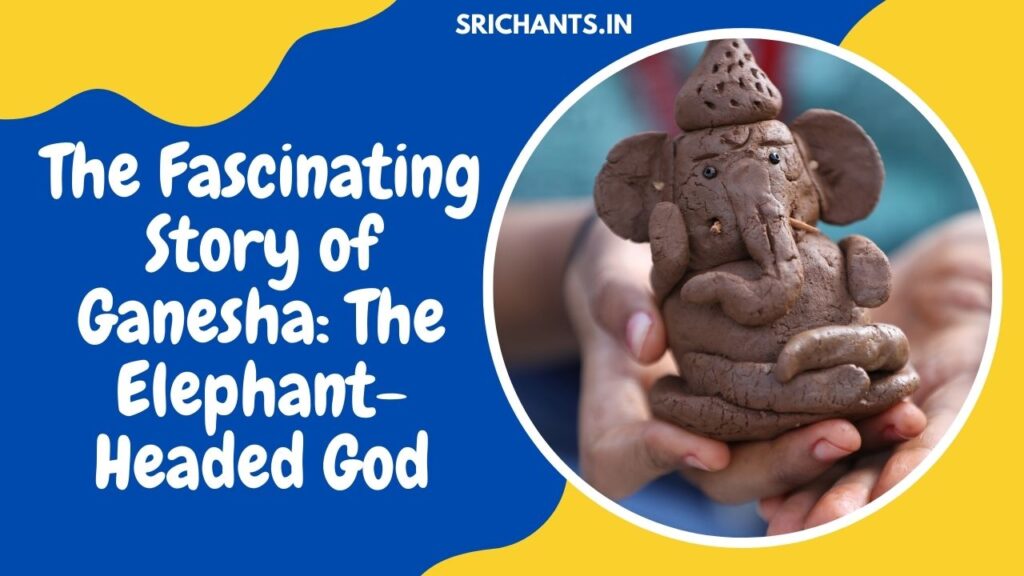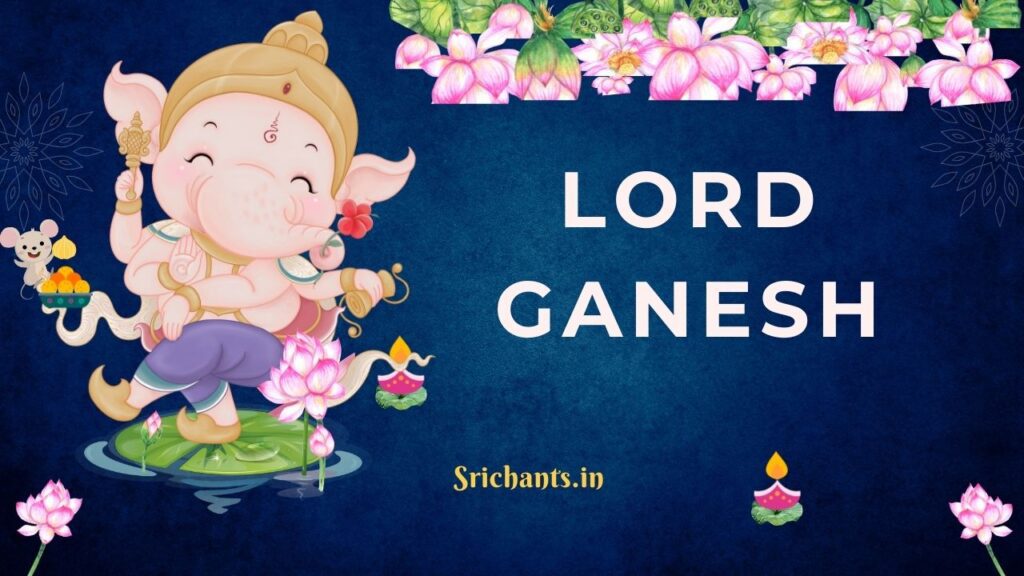Ganesha Yoga : Ganesh Symbolism in Yoga: Unleashing Wisdom, Strength, and Balance
Introduction
Within the domain of yoga practice, the figure of Ganesh, a Hindu deity, possesses immense importance. Ganesh is a revered deity symbolizing prosperity, safeguarding, and sagacity, while also signifying wisdom, wealth, and knowledge. Conversely, what is the precise nature of Ganesh, and how can his teachings, history, and symbolism be incorporated into daily life and yoga practice? This exhaustive guide aims to examine the philosophical underpinnings of Ganesh as it pertains to yoga.
It will delve into his historical significance, symbolic representations, and the invaluable teachings that he imparts to practitioners of the practice. We shall explore the ways in which the allegory of Ganesh can contribute to the development of a more profound and significant yoga regimen, as well as the ways in which his doctrines can be implemented habitually to promote enhanced tranquility, lucidity, and equilibrium.
Part 1: The Symbolism of Ganesh in Yoga
Introduction to the Symbolism of Ganesh in Indian Culture
One of the most venerated deities in Indian culture, Ganesh, is deeply ingrained in the nation’s spiritual practices. In addition to being depicted in ornaments, statues, sculptures, figurines, and embellishments, his influence extends to the yoga practice. Ganesh is frequently portrayed as a humanoid entity with four arms, an elephant head, and a prominent abdomen. This specific incarnation of Ganesh is replete with profound symbolism, which it imparts to individuals who practice yoga.
The human form of Ganesh is symbolic of intellect and reason, whereas the elephant head represents strength and sagacity. Ganesh’s large belly connotes his capacity for absorption—the ability to convert negative energies into positive ones—while his four limbs symbolize his aptitude for multitasking.
Moreover, Ganesh is frequently portrayed bearing a fractured tusk, an emblematic embodiment of his fortitude in surmounting challenges. The incorporation of Ganesh with a fractured tusk into yoga practice functions as a potent symbol that urges practitioners to maintain determination in the face of seemingly insurmountable obstacles.
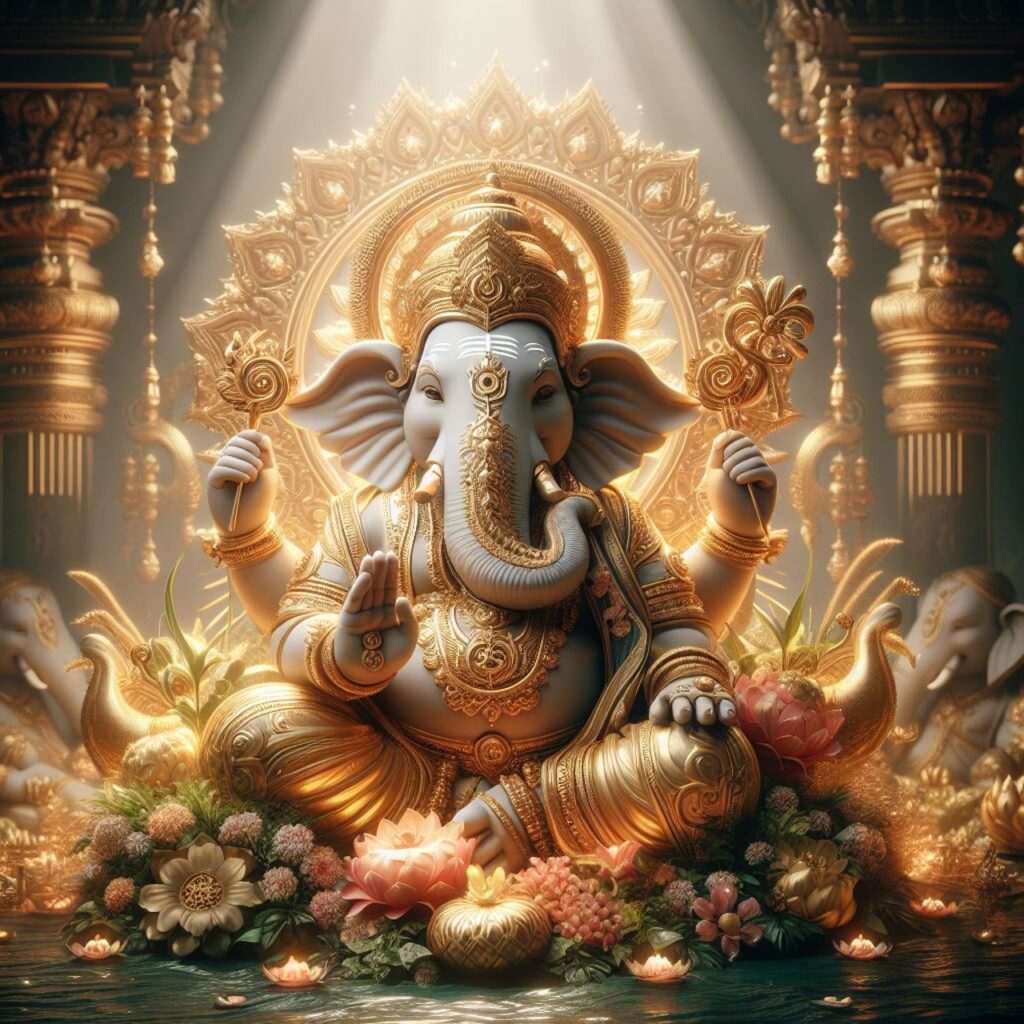
In conclusion, the inclusion of a rodent or rat in the company of Ganesh represents the virtues of self-discipline and the capacity to regulate one’s own desires and impulses. The Ganesh mouse functions as a profound symbol in yoga, underscoring the significance of maintaining mental and self-discipline.
In brief, the incorporation of Ganesh into yoga practice provides invaluable teachings pertaining to discernment, tenacity, self-regulation, and the conversion of detrimental to beneficial energies. Subsequent sections will delve into the narrative of Ganesh as it appears in Indian mythology, with an emphasis on how it can be employed to impart vital insights into the practice of yoga.
The Story of Ganesh in Yoga
In Hindu mythology, the narrative of Ganesh is replete with teachings on interior equilibrium, perseverance, and wisdom. Mythology holds that Ganesh is the progeny of Parvati, the goddess of fertility and love, and Shiva, the deity associated with transformation and devastation. Ganesh was bestowed with the head of an elephant subsequent to his mother fashioning a clay child in order to shield her. However, he was decapitated by accident by his father, Shiva.
Ganesh is frequently depicted as an inquisitive and merry infant with an innate passion for discovery. During a playful encounter, he came across a sage who bestowed upon him the responsibility of supervising the entrance to his meditation chamber. Shiva endeavored to enter the cave while on guard, but Ganesh, who was not informed of the true identity of his father, hindered his progress. Shiva, enraged, severed the skull of Ganesh, which led to his instantaneous demise.
Devastated with sorrow, Parvati beseeched Shiva to restore their son to life. Shiva obtained solely the head of an elephant, which he employed to resurrect Ganesh. Consequently, Ganesh assumed the form of a deity embellished with the head of an elephant, which came to represent intellect, power, and internal equilibrium.

The narrative of Ganesh within the context of yoga imparts profound insights regarding sagacity, fortitude, and internal equilibrium. Ganesh confronted a multitude of challenges over the course of his existence, among them being the loss of his cranium and the difficulty of attaining his father’s recognition. Nonetheless, by virtue of his intelligence, fortitude, and persistence, he overcame these challenges and rose to the esteemed position that he currently occupies in Indian society.
Furthermore, in yoga, the representation of Ganesh, adorned with an elephant head, is commonly evoked as a means to cultivate internal equilibrium. The human body is symbolic of intellect and reason, whereas the elephant head represents strength and sagacity. As a result, this depiction inspires individuals to develop a state of harmonious equilibrium between intellect and strength, rationality and wisdom, thereby promoting a more holistic and significant yoga practice.
In conclusion, the narrative surrounding Ganesh in Indian mythology imparts profound insights into the virtues of sagacity, tenacity, and internal equilibrium—all of which find practical application in the domains of yoga instruction and everyday existence.
Part 2: The Teachings of Ganesh in Yoga
The Key Teachings of Ganesh
Yoga practitioners are bestowed with a plethora of teachings from Ganesh, which incorporate virtues such as inner strength, compassion, wisdom, and joy. When incorporated into the practice of yoga, these teachings foster a more profound and significant involvement with the discipline. Additionally, they can be implemented in everyday existence to foster enhanced tranquility, lucidity, and equilibrium.
The perseverance teachings of Ganesh motivate individuals to confront and surmount challenges. His story functions as a poignant illustration of the critical nature of perseverance, particularly when confronted with seemingly insurmountable obstacles. Through the transmission of Ganesh’s teachings, individuals are able to access the intrinsic fortitude required to endure and overcome the challenges that arise throughout their yoga sessions.
Wisdom is widely recognized as one of Ganesh’s most exemplary qualities. Practitioners can develop cognizance of their bodies and minds through the application of wisdom, which empowers them to make well-informed decisions regarding their practice. Consistent engagement in meditation provides an effective method to cultivate wisdom and augment its manifestation throughout one’s yoga expedition.

An additional essential teaching of Ganesh is that inner fortitude enables individuals to overcome obstacles and overcome difficulties. Through the cultivation of interior strength and a concentration on the breath, individuals can manage physically taxing postures and maintain motivation despite experiencing fatigue.
The concept of equilibrium is personified in the distinctive form of Ganesh, in which his human body and elephant head symbolize a symbiotic relationship between rationality and strength, as well as intellect and strength. This concept is embodied in the yoga practice through a harmonious integration of relaxation and strength postures, physical exercise and meditation, and the multifaceted aspects of the body and mind.
Fundamentally, Ganesh’s teachings incorporate attributes including fortitude, sagacity, intrinsic fortitude, equilibrium, and prudence. Through the adoption and assimilation of these principles into their yoga regimen, individuals can augment their overall physical and mental health, thereby cultivating a symbiotic connection with the environment.
Part 3: Applying Ganesh’s Teachings in Daily Life
Deep insights that are applicable to everyday life are imparted by Ganesh in a manner that transcends the scope of the yoga mat. Individuals can enhance their ability to confront life’s obstacles and foster a more gratifying existence by exemplifying the virtues of Ganesh—wiseness, perseverance, inner fortitude, and equilibrium.
The tenets of Ganesh regarding perseverance serve as a daily reminder to good people to maintain their resolve despite encountering challenges. Individuals can ultimately attain success and develop personally by embracing this attribute and surmounting challenges.
By fostering mindfulness and exercising discernment, one can incorporate Ganesh’s teachings on wisdom into their day-to-day existence. Individuals can more effectively navigate the intricacies of life and exercise discernment by adopting a contemplative mindset.
Individuals are endowed with the fortitude and resolve to confront obstacles through the teachings of Ganesh, which symbolize inner strength. Truly realizing one’s potential is possible for those who muster the fortitude to surmount challenges.
Daily life is profoundly influenced by the concept of equilibrium, which is exemplified by Ganesh’s form. Harmony and fulfillment in one’s lifestyle can be cultivated through the strategic management of work and personal life, physical activity and leisure, and diverse responsibilities.
In summary, Ganesh, an esteemed divinity in both Hindu mythology and the practice of yoga, imparts insights that profoundly resonate with those who engage in the discipline. Individuals can elevate their yoga practice and adeptly navigate the trials of life by assimilating his teachings concerning perseverance, wisdom, inner strength, and equilibrium. One can foster a more harmonious and complete existence by incorporating the principles of Ganesh into their daily lives.
It is crucial to bear in mind that Ganesh’s teachings transcend the domain of yoga and have implications for every aspect of life. They function as a beacon of guidance, encouraging tranquility, discernment, and equilibrium. Engaging in a journey of self-exploration and personal development can be achieved by paying homage to the teachings, fortitude, and wisdom of Ganesh.
Be guided along the path of yoga and life itself by the teachings of Ganesh, whose symbolism can provide inspiration.
#yoga #ganesh #ganesha

